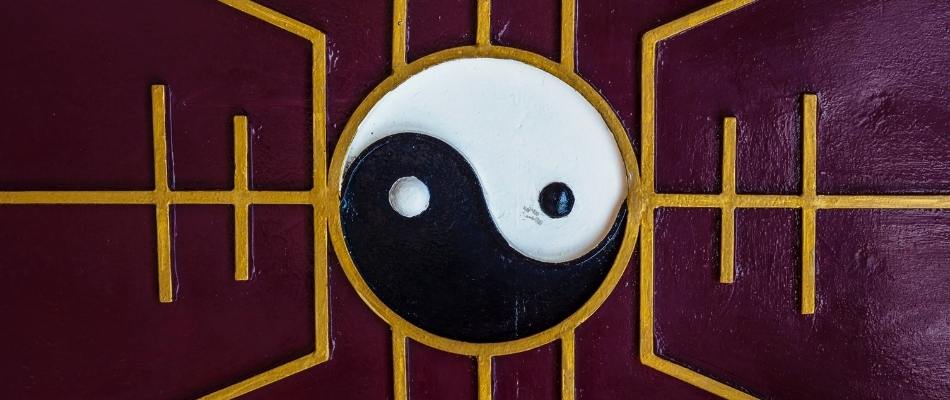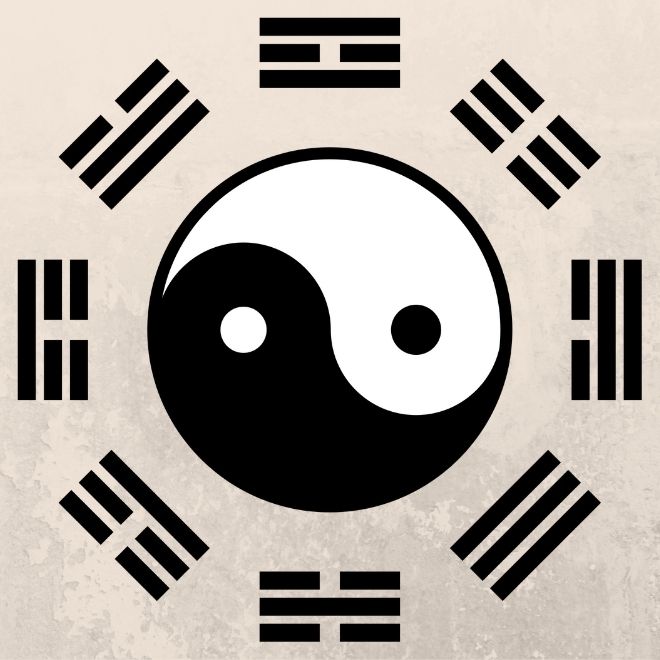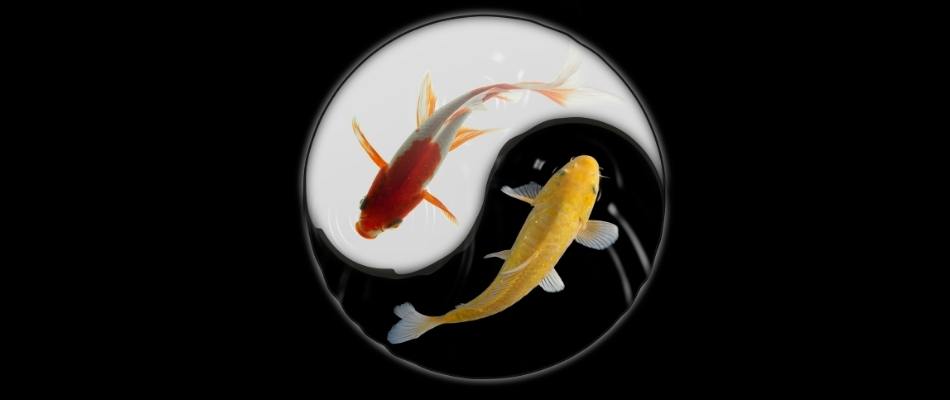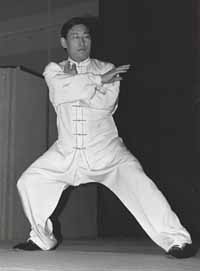Of all of the philosophical concepts related to Chinese medicine, philosophy, and martial arts, Ying Yang Theory is by far the most foundational and most important. It has the power to be a roadmap for us to make improvements in our lives and also unearth problems in our movements, health, jobs, and even relationships. Benefitting from Yin Yang Theory is actually quite easy. We just need to know a little bit about its origin, purpose, and how we can apply it in our life.
Yin Yang Theory is a philosophical idea that describes the relationship between opposing energy, ideas, and forces. It is used as a framework for understanding how contradictory situations relate to each other, are connected, and influence each other.
We all have friends in our lives who are experts at seeing why we might be struggling with a situation when we are blind too it because we are too involved. Or, we have had great teachers or professors who were able to guide us on to higher learning because they knew what the next step was or what we are missing. This is exactly how Yin-Yang Theory can be used to make improvements in our life. It is a way for us to diagnose or assess our situation when we want some sort of change. It then provides ideas for how we can move in that direction.
Let’s start with the history of the Yin Yang Theory and then talk about the meaning of yin yang symbols because they are actual visuals we can use to problem solve. We will then end with a practical example for how to apply Yin Yang Theory in our lives by showing how to use the tai chi form to practice thinking in new ways.

What is Yin Yang Theory?
Yin Yang Theory is a Chinese philosophical concept dating back to the 4th century that was developed by the School of Naturalists as a way to understand the universe be describing the way that everything around us is related to or influences each other.1 It is most often discussed along side five elements theory which describes the relationships between all of opposing forces. We talk about the basics of 5 Elements Theory in another essay.
Yin Yang Theory was first described metaphorically where Yin (阴) stood for the shady side of a slope that is part of, but opposite to, Yang (杨) or the sunny side of the slope. From there, yin and yang theory was developed to describe the union but opposite of nearly everything in our world. Here are some common examples.
Examples of Yin & Yang
| Yin (阴) | Yang (杨) |
|---|---|
| Dark | Light |
| Cold | Hot |
| Internal | External |
| Soft | Hot |
| Feminine | Masculine |
| Old | Young |
| Poor | Rich |
| Even | Odd |
| Moon | Sun |
| Earth | Heavan |
| North | South |
| Valley | Mountain |
The early philosophers and legions of people who took up this concept to explore their world found the idea of this duality in nearly everything. Independently (possible influenced by Yin-Yang Theory?) Westerners were also exploring Dualism. What was intriguing and most important to us, is that they identified some “truths” that always exist in every situation:
1. Nothing occurs in isolation.
Two opposing forces almost always exist together. We know that something is light because of the dark background it is up against. We describe being sick as the absence of what normally occurs with health.
2. If something is out of balance (at an extreme) it’s problematic.
If something is too hot, dry, large, etc. We know which direction we need to go to correct it (cold, wet, small). While this seems like an obvious point, most people over-correct such as using an extreme diet to get thin which can unbalance us in the opposite direction. Yin Yang Theory helps us get to the middle so that the extremes aren’t an issue.
3. Yin and Yang are dependent on each other.
Too much of ___________ (fill in the blank) is corrected by seeking the other. This is another way that the Yin Yang Theory can give us a new way of looking at things. In the West we are often programed to see things as good or bad. A flood is bad, right? But isn’t a drought also be bad? How can they both be true? By labeling the extremes we miss an opportunity to find permanent solutions that keep us in the middle.
4. Opposites like Yin and Yang consume each other.
This one bends the brain a bit but if you think of everything as being on a spectrum (e.g., light-dark, angry-happy) you see that less light is actually just a little more dark. We rarely go from angry to happy but instead slide along a spectrum: rage-furious-angry-mad-pessimistic-melancholy-content-optimistic- happy-blissful. So to be less-angry is to be a little more-happy. Again, in our Western thinking we usually know that we just don’t like or want our current state but crave the opposite. Yin Yang Theory gives us more options to not only transition away from what is undesirable.

The Meaning of the Yin Yang Symbol
The beautiful yin yang symbol that we know today has no known origin. Examples date back thousands of years and it can be found in art and architecture throughout the world. The meaning of the yin yang symbol expresses:
- Duality
- Opposites
- The union and whole relationship
- Circular and continual flow
- Equality – equanimity. By cutting the symbol in half at any point, each side will contain the same relationship of yin and yang.
- Interdependence. The small dots in each section represent the idea that even in the fastness of one extreme or idea exists its opposite at the core.
The Eight Trigrams of the Ba Gua and the Yin Yang Symbol
Yin Yang Theory is analyzed in greater depth using the eight trigrams (Ba Gua) which is often shown with the yin yang symbol. A long think line represents yang. The broken line represents yin. By combining these lines in various patterns you arrive at eight trigrams that represent primary aspects of our reality. This can be pretty metaphysical but doesn’t have to be. As an example they are describing the 8 primary directions, 8 primary personality types, 8 primary body parts, and so on. Think of it as a clear cut way to describe one situation, aspect of a person or event, and see the opposite direction you need to move or what you need to include in a situation to make something more balanced.

Yin-Yang Theory in Chinese Philosophy and Medicine
Looking at Chinese medicine gives us insight into how Yin-Yang Theory can be used in practical ways to yelp us. In Chinese medicine a diagnosis results in good health which would be an overall good balance in the body. Think of this as being right in the center of the yin yang symbol. A disorder or sickness would be categorizes as one of four things: an excess of yin or yang or a deficiency of yin or yang. Once diagnosed, herbs, exercises, acupuncture, and even foods can be used to bring a person back in the opposite direction.
Let me give you an example. Let’s say someone is sick, cold, and low in energy (Excess Yin or Deficient Yang). Herbs and activities that promote warmth or restoring would be prescribed. Conversely, an anxious, hot person would receive a prescription that would move them in the direction of Yin. What’s amazing is that “cures” and remedies that have long since been attributed to either serving yin or yang are now being tested and proven to help with studies in modern medicine.2
Practicing Yin Yang Theory with Tai Chi
Hopefully by now you can see that by first identifying what our current situation is, and then secondly knowing which way we need go in order to correct that situation, gives us a sort-of roadmap for how to make change happen. This philosophy is not natural for most of us. The tai chi form gives us a way to practice thinking in this way so that it becomes more common in the rest of our life.
When we’re starting out practicing tai chi we often think we are soft and relaxed when we’re actually pretty far from it. This can be frustrating on a number of levels. First of all, who am I (or your teacher) to tell you that you are not relaxed when your body is giving you every indication that you are? Secondly, what is the value of a teacher pointing out this error continually which seems to undermine progress?
Your body and mind can tell you two different things.
The idea of being told to do something when you thought you already were, can be seen in many areas of tai chi. You are standing in a posture, in relaxed la-la land and your instructor tells you to relax. What did he think you were doing! You are performing a move slowly, i.e. Matrix style, and your instructor tells you to slow down. You tell a student to hold a “deep” horse stance for 90 seconds and counsel them to stop rising up. They look perturbed. You place them back in a horse stance under a shelf and they bonk their head. They are stupefied that they were moving up.
How are these diametrically opposed situations possible? Because habits, emotions, or the pain from the deep stance sends messages to the brain telling us how correct we are even when it’s not true. It’s a innate mechanism to protect us from pain or if our self-image is being challenged. It’s also the body’s natural desire to save energy and if it can do something it is familiar with rather than learning something new, it will take it. Because new learning takes energy and is an unknown where as our habits are known and safer. By waking up to this trickery we can make minute changes and begin to enjoy progress.
Yin Yang Theory and Monitoring Progress in Push Hands
In a workshop with Grand Master Chen Xiaowang he covered the stages of development that are made from continual practice in push hands. It is a great example of how to self-assess and move in the direction of improvement.
But first, let me say that it took me a long time to come to terms with the fact that the progression is going to be from hard to soft. From “external” to “internal.” Yin Yang Theory gives us a paradigm where we can gave our progress incrementally. First 90/10, then 80/20 etc. until we become more balanced in power and form. This is the classical way in tai chi and it’s probably just a reality.
Level 1
They may not have mastered the application but by knowing how to mislead his opponent the student may occasionally be able to throw off his opponent. Even then, he may be unable to maintain his own balance. Such a situation is thus termed “the 10% yin and 90% yang; top heavy staff.”
Level 2
One may be able to move and ward off an attack but may easily commit errors like throwing-off or collapsing and over-exerting or confronting force. Because of these, during push-hands, one cannot move according to the sequence of warding-off, grabbing, pressing and pushing down. Yin Yang Theory offers us a perfect way to understand this imbalance because a person with this level of skill is described as ‘20% yin, 80% yang: an undisciplined new hand.’
Level 3
Even in leading-in and expelling-out the opponent, one [may] feel stiff and much effort is required. As such the skill at this stage is described as ‘30% yin, 70% yang, still on the hard side.’
Level 4
On contact with the opponent, one can immediately change one’s action and thus dissolve the on-coming force with ease, exhibiting the special characteristics of going along with the movements of the opponent but yet changing one’s own actions all the time to counteract the opponent’s action, exerting the right force, adjusting internally, predicting the opponent’s intention, subduing one’s own actions, expressing precise force and hitting the target accurately. Therefore, a person attaining this level of kung fu is described as ‘40% yin, 60% yang; akin to a good practitioner.’
Level 5
As regarding the martial skill, at this level the gang (hard) should complement the rou (soft), it (the form) should be relaxed, dynamic, springy and lively. Every move and every motionless instant is in accordance with tai chi principle, as are the movements of the whole body. This means that every part of the body should be very sensitive and quick to react when the need arises. So much so that every part of the body can act as a fist to attack whenever is in contact with the opponent’s body. There should also be constant interchange between expressing and conserving of force and the stance should be firm as though supported from all sides.
The description for this level of kung fu is that it is the ‘only one that plays with 50% yin and 50% yang, without any bias towards yin or yang, and the person who can do this is termed a good master. A good master makes every move according to the tai chi principles which demands that every move be invisible.’
Here is the take-home message
At the uppermost level of development we land right in the middle of the yin yang symbol with an even 50/50 split between the energy that is coming in and the energy that is going out. We can practice this in tai chi and push hands in thinking about hard and soft or relaxed and still. It’s the constant work on the same form that leads to our increased ability at adaptation.
By continual work on dual aspects of Yin Yang Theory such as softness and relaxation, we are simultaneously achieving the health and mental benefits from “relaxation” and building up true internal power. Any time that we find a singular focus that results in multiple benefits we know we are participating in a great and natural process.
Progress has to be from hard to soft
And now we start to see some of the efficient beauty of tai chi. It is a landscape for us to practice this notion, get familiar with the process and apply it to our life. Let’s say you are overweight. Carrying less fat moves you in the right direction. What do you need to do more of AND less of? Not just more exercise or more health foods. Can you sleep more to reduce cortisol and stress? Not just eating less. Can you work less to give you more time for activity and less stress? We all tend to start off too “hard” meaning we are doing more and trying really hard. But in addition, what can we remove from the process? Shooting for the middle described by Yin Yang Theory is one of the fastest ways to make progress in tai chi.
Learning to “relax” can be charged with frustration and is a suggestion that is often seen as a criticism. It is time to view it in its intended light: your relaxation charts your progress.
Here is a great online course covering important tai chi concepts and theory:
References:
- Needham, Joseph; Science and Civilization in China Vol.2: History of Scientific Thought; Cambridge University Press; 1956
- The Yin Yang Property of Chinese Medicinal Herbs Relates to Chemical Composition but Not Anti-Oxidative Activity: An Illustration Using Spleen-Meridian Herbs




